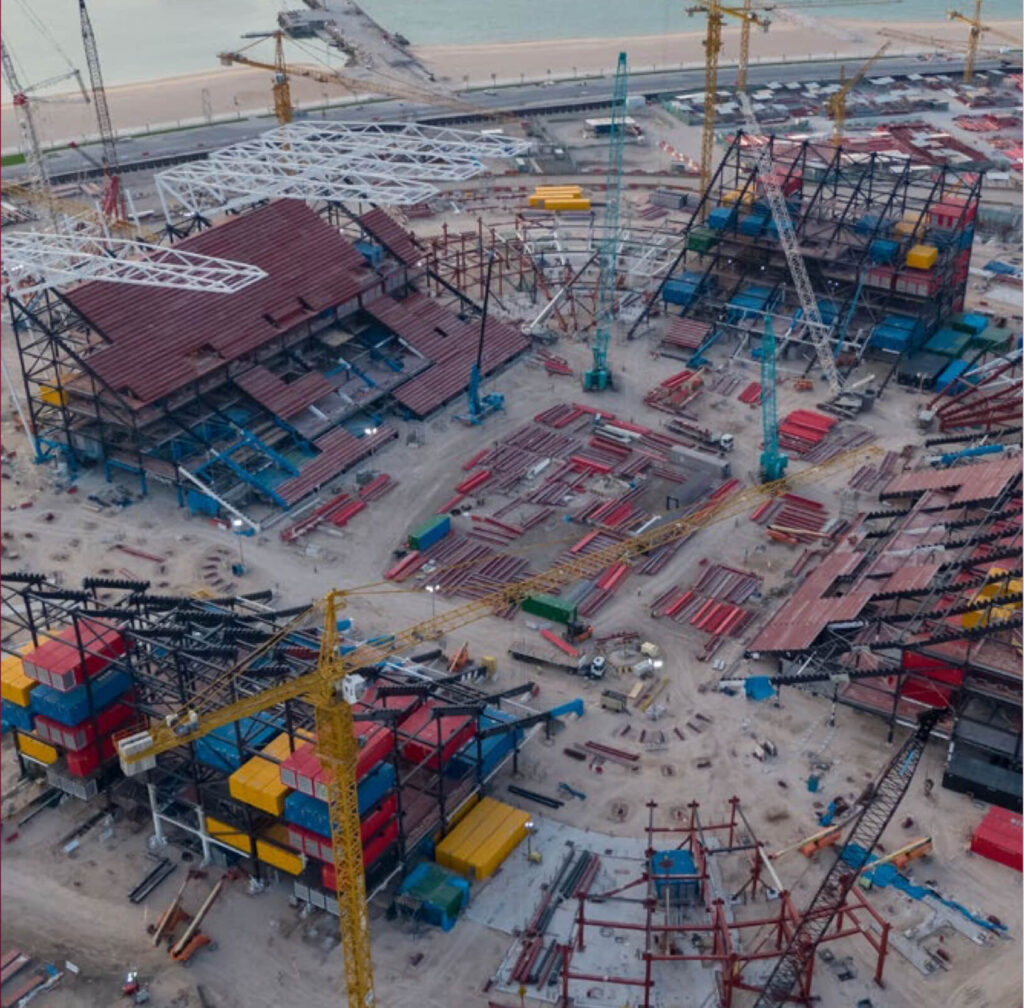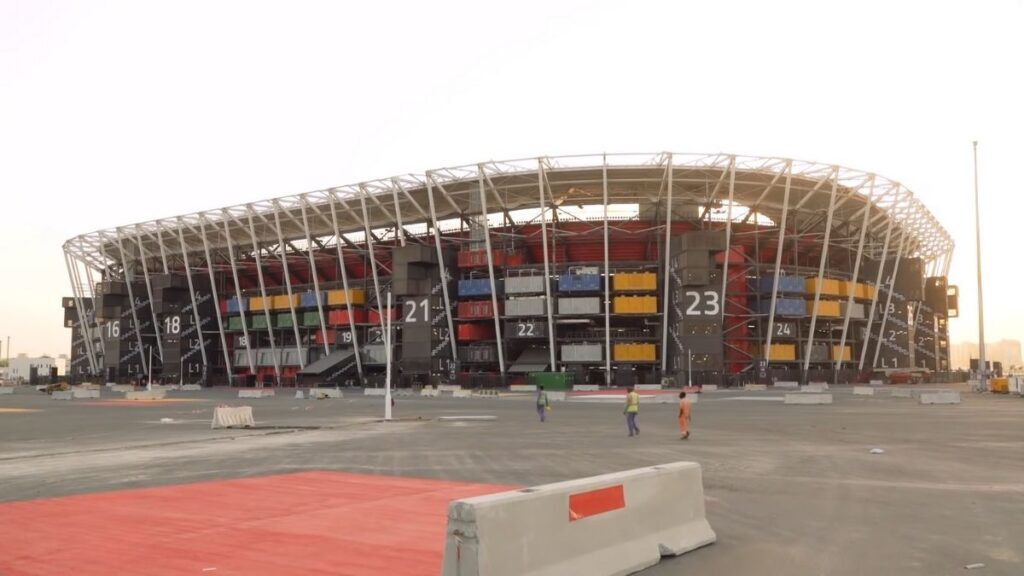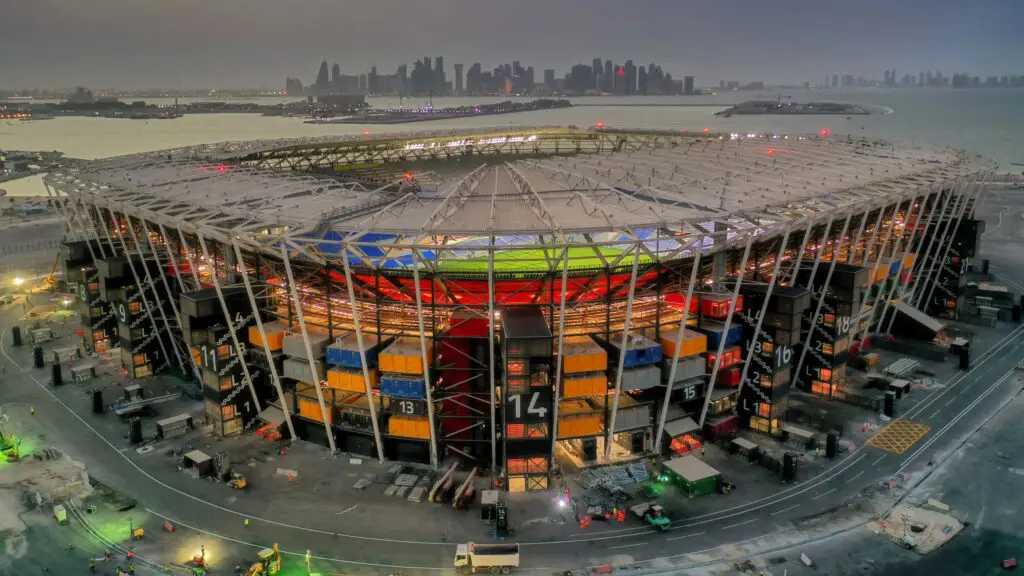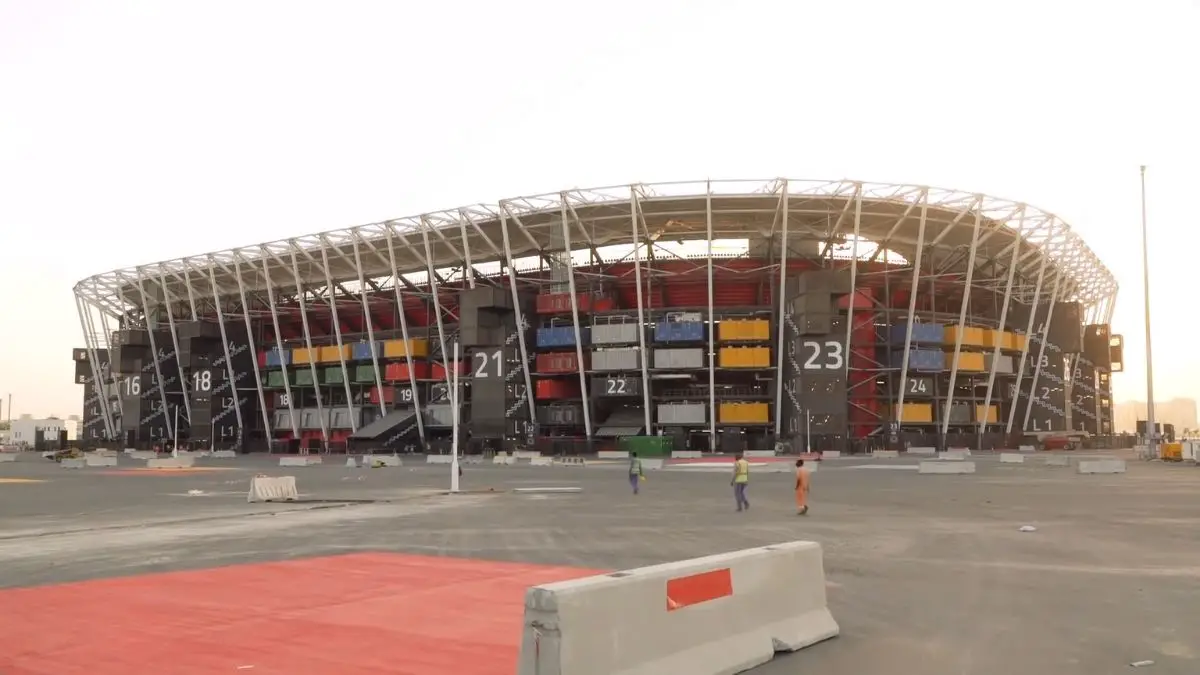The world watched in awe as Qatar unveiled its innovative shipping container stadiums during the World Cup. These billion-dollar structures exemplify the nation’s commitment to hosting an unforgettable event and pushing the boundaries of modern architecture. Featuring seven technologically advanced stadiums, Qatar focused on sustainable design and the potential for repurposing these venues after the tournament’s end.
Now that the global spectacle has concluded, many wonder what will happen to these remarkable shipping container stadiums. Excitingly, plans are already underway to transform these world-renowned structures, ensuring their legacy extends far beyond the World Cup. Qatar’s organizers aim to dismantle some stadiums and donate their materials to countries in need of sporting infrastructure, leaving a minimal footprint on the Qatari sands.
Further adding to the excitement, adaptable elements of these stadiums will be used to create newly compact arenas specifically designed to cater to domestic and continental sporting events. This innovative approach demonstrates Qatar’s dedication to ensuring the sustainability and lasting impact of their World Cup contribution on both a local and global scale.
The Significance of Qatar’s Innovative Stadiums
Qatar’s ambitious and state-of-the-art stadiums have captured the world’s attention during the recent World Cup. The country has showcased remarkable engineering feats as well as pioneering sustainable practices that set a new standard for future events. This section delves into two of the most notable stadiums from the tournament: Stadium 974 and the Education City Stadium.

Pioneering Stadium 974
Stadium 974 is a standout example of innovation in Qatar’s World Cup stadiums. This unique venue was constructed primarily out of shipping containers to minimize its ecological footprint. By embracing modular design and using recyclable materials, Stadium 974 has set a precedent for multi-purpose venues that can be easily dismantled, reused, or repurposed. The stadium hosted seven matches during the tournament, and now that the World Cup has concluded, it is due to be dismantled. However, there is no clear timeline for when this process will occur.
Sustainability and Legacy of Qatar 2022
Sustainability and legacy have been key priorities for Qatar during the planning and execution of the World Cup. The country invested an estimated $220 billion in infrastructure and facilities, with stadiums accounting for roughly $10 billion. This massive investment has made it crucial for Qatar to ensure the lasting impact of these projects on the nation as well as the global community.
Education City Stadium is an inspiring example of this forward-thinking approach. Touted as a ‘diamond in the desert’, the stadium features a highly efficient solar-powered cooling system that works to keep temperatures manageable despite the unforgiving desert climate. Following the tournament, the venue will continue to serve the community as a hub for recreational activities and sports.
Furthermore, plans are in place to repurpose the modular components of Stadium 974 and other similar arenas to create facilities for various purposes, including sports, education, and cultural events.
In conclusion, Qatar’s remarkable World Cup stadiums, particularly Stadium 974 and Education City Stadium, have showcased the possibilities of innovative, sustainable engineering. Their dedication to ecological responsibility and long-term benefits sets a new benchmark for major events worldwide.
What’s Next for the Stadiums After the World Cup?

Dismantling and Repurposing Plans
After an exciting and thrilling World Cup, the billion-dollar shipping container stadiums in Qatar are now entering their next phase. One of the most fascinating aspects of these stadiums is their modular construction made from shipping containers, which allows them to be easily dismantled and repurposed. The Qatari government has a Post-World Cup Plan in place, which involves reusing and relocating the stadiums’ components to create new facilities in Qatar and around the world.
Impact on Local Communities and Infrastructure
The shipping container stadiums have served as an impressive display of engineering and innovation, but they also hold the potential to impact local communities positively. By dismantling and repurposing the stadiums, valuable resources can be devoted to important infrastructure projects and communal spaces in the region. This will help improve the quality of life for Qatari citizens and spur economic growth in the area.
Not only can the stadiums’ components be used to build new sports facilities, but excess containers can also be employed as community spaces like libraries, schools, or health centers. Such initiatives will encourage social development and provide essential services for local communities in Qatar.
Potential Benefits for Developing Countries
The Qatari government’s vision for these modular stadiums extends beyond their borders. By offering the shipping container components to less wealthy countries and developing countries, Qatar aims to create a legacy of promoting sports and sustainability throughout the world.
Once the stadiums are dismantled, the shipping containers can be sent to countries in need of affordable and sustainable infrastructure. This novel approach to repurposing the stadiums has the potential to foster international cooperation, improve sports facilities in developing countries, and promote a greener approach to constructing sports arenas. In essence, the billion-dollar stadiums from the World Cup are set to become a true global phenomenon, leaving a lasting and positive impact.

Exploring the Future Sporting Events in Qatar
Now that the World Cup has come to an end, Qatar’s billion-dollar shipping container stadiums open doors to a myriad of possibilities for hosting major sporting events, leaving sports enthusiasts excited about what’s to come. With an eye on sustainability and an expanding sports culture, the future seems vibrant for this small yet ambitious country.
Upcoming Tournaments and Championships
One of the most significant events that Qatar is eagerly preparing for is the 2030 Asian Games. As hosts, Qatar aims to showcase its magnificent infrastructure and welcome athletes from across the continent. Besides the Asian Games, the nation is also likely to bid for hosting the Asian Cup, a prestigious football championship in the region.
It’s not just about global events; the local sports scene also benefits from the exceptional facilities. Domestic games involving the Qatar National Team and events promoting various sports disciplines are expected to take place in the state-of-the-art venues.
Integration into the Qatar Stars League
The stunning World Cup stadiums won’t lay idle. Plans are brewing to integrate them into the Qatar Stars League, the country’s top-tier football league.
Integrating these world-class stadiums into the Qatar Stars League not only bolsters the game’s growth in the country but also offers an unparalleled experience for fans and players alike.
With so many exciting events and developments on the horizon, it’s clear that Qatar’s billion-dollar stadiums have immense potential in shaping the nation’s future sporting landscape.






